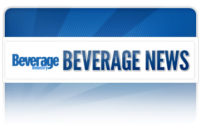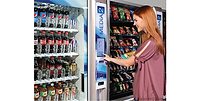Although not significantly, the economic downturn did have a negative effect on the vending channel, says Dan Mathews, executive vice president and chief operating officer with NAMA. However, he predicts that sales will be flat for 2011, suggesting reversed trends thanks in part to productivity gains in technology, he says.
“Actually [vending] is kind of an early barometer of what’s happening with the economy because a large percent of the sales — probably 60 percent or so — is from people at work,” Mathews says. “If there’s fewer people working, if there’s less overtime or if a shift is cut at a manufacturing facility, we see that first-hand because of the lost sales. So we can kind of tell in this industry what the future state of the economy is just based on how sales are going and how the employment is working out.”
In order to gain a better understanding of the vending consumer, in early 2011, NAMA contracted a consumer research study, which found that consumers have a favorable opinion toward vending, particularly generation Y or millennial consumers, Mathews says.
“Eighty-five percent of generation Y that uses vending machines has a very favorable opinion of vending machines, and they like to use vending machines,” he says.
Mathews adds that respondents indicated that if they were in equal distance between a vending machine and other channels, more than 50 percent would go to a vending machine.
Since then, NAMA has developed marketing programs, mainly through social media, to appeal to the consumers who have a favorable impression of the vending channel, Mathews says. The association also hosted its Gratitude Tour, a seven-city appreciation tour. The tour highlighted some of the key technology innovations and traveled across the country with stops in Boston; New York City; Austin, Texas; Atlanta; Phoenix; Minneapolis; and Madison, Wis.
“We brought all of our cool, new equipment in … and we had a whole afternoon where people [came to] try the new foods and beverages that were available [and] to try the new machines out,” says Tom Reynolds, vice president of sales for foodservice and vending for PepsiCo and chairman of NAMA’s industry growth committee. “It was just sort of a ‘thank you.’”
Interactive experiences
To reach more consumers, NAMA also is trying to highlight the convenience and consumer value of the vending channel, Mathews says.
“Usually, the price points are below what people will get in the [convenience] store,” he says. “It’s very reliable and we’ve got some cool technology that will help people be much more interactive in their experience, and that will really help start growing this business.”
Addressing that interactive trend, PepsiCo announced earlier this year that it developed a prototype called the Social Vending System. The state-of-the-art networked unit features full touch-screen interactive vending technology, enabling consumers to better connect with PepsiCo brands at the point of purchase, the company says.
Using digital technology, PepsiCo’s Social Vending System enables users to send a gift to a friend by selecting a beverage and entering the recipient’s name, mobile number and a personalized text message. There’s also an option to personalize the gift with a short video recorded at the machine. The gift is delivered with a system code and instructions to redeem it at any PepsiCo Social Vending system. When recipients redeem their gifts, they’re given the option of either thanking the original senders with gifts of their own or gifting beverages to someone else.
“Social vending extends consumers’ engagement beyond the confines of their own communication devices,” says Mikel Durham, growth officer for PepsiCo Global Foodservice. “It transforms a static, transaction-oriented experience into something fun, exciting and uniquely connected.”
The current prototype has a lineup of seven core carbonated soft drink brands, but could accommodate virtually any vended package from a stacked machine, he adds.
“The idea is to create a three-way channel with consumers, allowing us not only to meet their needs, but to provide transformational experiences that will drive incremental sales,” Durham says. “At the same time, the operator gains additional consumer insight and a clear means to manage inventory more efficiently — everybody wins.”
Also addressing the interactive aspect of the vending channel, Coca-Cola Foodservice & On-Premise, a division of The Coca-Cola Co., Atlanta, announced at the NAMA OneShow in April that the company’s Coca-Cola Interactive Vender (CIV) currently is in testing with select Coca-Cola customers as the company evaluates future deployment strategies.
CIV combines a large-format LCD touch screen with multimedia functioning, including Flash technology, motion graphics, high-definition video messaging, Bluetooth capabilities and click-through promotions. Features of the machine are its three media zones: a customizable display intended for media placements such as Coca-Cola brand commercials; a selection zone where products can be scrolled through and packaging can be selected and “spun” 360 degrees to review product information; and the static advertising window, which also is customizable and interactive.
Payment expansions
Interactivity is not the only major innovation taking place in the vending channel. NAMA chairman and PepsiCo’s Reynolds says another trend that is taking place is payment convenience.
“A lot of both the beverage and the food snack machines are being equipped with cashless capability so you don’t have to put a dollar bill in there or fumble around for change; you can use your credit or debit card, so it’s becoming more convenient,” he says.
NAMA’s Mathews adds that beyond cashless transactions will be the use of mobile payments. “The cashless systems that are coming out will give a revenue jump because people are going to be able to pay with whatever they have in their wallet, and the new mobile wallets are going to have a huge impact when you look at the future of vending,” he says.
“… There’s Google Wallet and several other companies that are coming out with mobile wallets,” Mathews continues. “Being able to access through a mobile phone or a card reader paid through your mobile phone is going to have a huge impact.”
Earlier this year, Google along with Citi, MasterCard, First Data and Sprint announced and demonstrated Google Wallet, an app that will turn a person’s phone into a payment device, allowing them to tap, pay and save money while they shop.
Following its commercial launch, Google Wallet will support payments with two payment solutions: a PayPass eligible Citi MasterCard and a virtual Google Prepaid card, the company says. It also will use near-field communication to make secure payments fast and convenient by tapping the phone on any PayPass-enabled terminal at checkout.
MEI Marketing Director of Vending for Americas and South Asia Chuck Reed says Google Wallet uses a basic ISO contact-less standard, so essentially any vending machine that already has a near-field cashless device on the machine should be able to accept the Google Wallet.
“If you read Google’s announcement on Google Wallet, the payment piece, the actual transaction payment is in their mind a very small part of the overall value proposition for the wallet application, although from a vending operator point of view the ability to take yet another form of payment from a consumer is always a good thing,” he says.
Reed says that Google Wallet also can function as a discount or rewards program by including, for example, My Coke Rewards from The Coca-Cola Co.
Google Wallet is engineered to enable secure payments that will require an app-specific pin. In the first release, all payment card credentials will be encrypted and stored on a chip, called the secure element, that is separate from the Android device memory and is accessible only by authorized programs, the company says.
Companies that supply the technology for alternative methods of payment are seeing a growing appeal for it in the vending marketplace.
“While paying by card is certainly more common among younger consumers, the fact is that customers of all ages and demographics are demonstrating a propensity for making purchases by card,” says Rinaldo Spinella, executive vice president of unattended payments for Apriva. “They like the convenience, and the fact that they are not limited to buying merchandise by the bills or coins in their pockets.
“We don’t see cashless as being limited to any particular group or demographic,” he continues. “In fact, we see it becoming a ubiquitous method for consumers looking to make all kinds of purchases.”
Spinella says he’s seen a growing acceptance for card-based payments in the vending industry and cites that Apriva Vend cashless solution activations increased 24 percent in the third quarter of 2011 compared to activations in the previous quarter.
“This is a trend that will only accelerate as more and more operators become comfortable with the concept of accepting card-based payments,” he says.
MEI’s Reed says the systems that support cashless and mobile payments also include online components that allow operators to track alarms and inventory as well as improve efficiencies, which have a place in the vending channel’s future.
“I think online is the key technology going forward,” he says. “As more machines are able to come online it enables mobile payments and cashless payments, it enables operational efficiency improvements, and, really I think, ultimately where this heads is a much more consumer-interactive engagement, so as a machine is online it enables a whole new world of opportunities.”
But cashless is not the only alternative payment option that is available for vending. “One of the other things that’s going on in this space is the continued adoption of bill recycling,” Reed says.
Bill recycling allows machine owners, such as bottlers, to take large denomination payments, such as a $20 bill, and give the consumer change in $1 or $5 note denominations to satisfy the credit, Reed says.
“As a bottler, I now can turn on a much higher denomination acceptance and accept those bills that otherwise I couldn’t in the past and drive sales lift,” he says. “The bottlers are seeing a significant sales lift when they enable these higher denomination bills to be accepted.”
Reed adds that MEI is seeing a significant increase in the adoption of the bill recycler as an alternative technology adoption to cashless. BI








